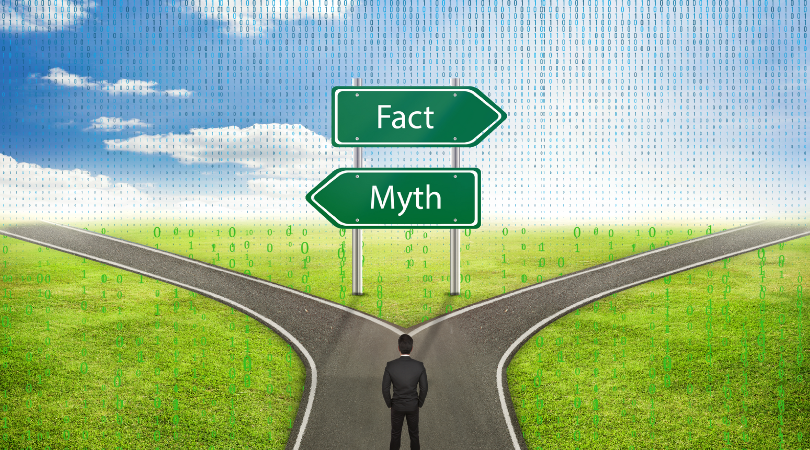Seven Tech Myths (and the Actual Facts)
Some myths are enduring – even when proven otherwise. Many people still look askance at sparkling blue water, if they’re seeing those inviting waves within one hour of eating. While it’s true that scientists have largely debunked the idea that swimming within an hour of eating is on par with trying to waltz with a […]
Technologies

Some myths are enduring – even when proven otherwise. Many people still look askance at sparkling blue water, if they’re seeing those inviting waves within one hour of eating.
While it’s true that scientists have largely debunked the idea that swimming within an hour of eating is on par with trying to waltz with a bear, anyone who ever heard that growing up probably experiences just a little twinge of danger when ignoring the rule.
Oddly, those same people would laugh at myths disproved long ago. Centuries ago, people believed that eating a “poisonous love apple” could kill you, but the last time you consumed a tomato, I doubt you called it a “poisonous love apple” or feared its consumption would end with you six feet under. Although, there’s a logical explanation for why people feared that eating tomatoes would kill one.*
With technology now at our fingertips, it’s easier than ever to google and determine the veracity of a statement. Internet sources might not always agree, but one can generally find somewhere trustworthy to find out needed information.
Even so, myths and misconceptions abound – including around technology itself.
Curious to know if any of your technology beliefs are more rooted in myth than truth?
Here are seven tech myths – and the actual facts.
1. Myth: More Megapixels Mean Better Camera Quality
Fact: More megapixels can result in higher resolution images, but that doesn’t guarantee better quality. Camera quality depends on multiple factors, including the sensor size, lens quality, and image processing capabilities. A camera with fewer megapixels but a larger sensor can outperform a higher megapixel camera in low-light conditions. Larger sensors allow more light to be captured, which in turn captures more detailed images.

2. Myth: Closing Apps on Your Smartphone Saves Battery Life
Fact: While logic would seem to dictate that closing apps on smartphones can save battery life, the opposite is true. Modern operating systems are made to manage background apps efficiently. Reopening apps that were manually closed requires more energy than leaving them in a paused state, much like getting a car in motion requires more energy than keeping a car in motion. If you do need to save battery power, one can reduce screen brightness and turn off unnecessary notifications.
3. Myth: Macs Are Immune to Viruses
Fact: Macs aren’t immune to viruses or malware, but they are less likely to get them. This myth stems from the fact that macOS has a smaller market share, which means a cybercriminal trying to wreck havoc is better able to do so by targeting the wider-used Windows operating system. Think of it like a cold virus that is genetically created to only target people with one color of eyes. A mad scientist trying to sell more cold medicine would most likely choose brown eyes (50%-80% of world population) rather than green eyes (2% of the world population) to increase sales of the cold remedy. As the popularity of Mac rises, threats also increase.
4. Myth: Private Browsing Keeps You Completely Anonymous
Fact: Incognito mode prevents a browser from storing one’s search history and cookies, but it doesn’t make one completely anonymous online. Websites, internet service providers, and network administrators can still track one’s activity.
5. Myth: The More Bars, the Better Your Cell Service
Fact: Much like a bunch of tables ready for customers might lead one to believe a restaurant will provide fast service, the number of bars on your phone seems like it should correlate with the speed and quality of our service. However, the bars indicate the strength of the signal – not the quality. A restaurant filled with tables might still take forever to bring the food if there’s only one harried waiter trying to take care of a host of hungry customers. That means one can have full bars and still experience poor call quality or slow data speeds if the network is congested. Network traffic, distance from the cell tower, and a phone’s hardware affect service quality more than the number of bars displayed.
6. Myth: More RAM Means Faster Computer Performance
Fact: Having sufficient RAM can improve performance, but it isn’t the sole factor that determines speed. The CPU, storage type, and graphics card are also important. Upgrading one’s RAM can help when running multiple applications, but one needs to balance it with other hardware improvements to achieve optimal performance.
7. Myth: Charging Your Phone Overnight Damages the Battery
Fact: Modern smartphones use lithium-ion batteries and smart charging technology which stops a phone from drawing power once it’s fully charged. So leaving your phone plugged in overnight is pretty safe, but it’s a good idea occasionally to unplug in order to prevent long-term battery degradation.
Much like many myths, there is a reason why people hold to them. Whether it’s a misunderstanding or outdated information, often there’s a kernel of truth or believability in myths.

One thing that is not a myth is that choosing the right technology partner is important for a project’s success. Swan Software Solutions has partnered with many clients to bring their ideas to life. To discover more about how we could help your company with a custom solution, schedule a free assessment.
*So why did people think tomatoes would kill them? Two reasons. One, tomatoes are a part of an often deadly plant family, which includes family members like mandrake and belladonna. Two, the acidity in tomatoes would interact with the lead-based pewter plates of the era and cause lead to leach into the food. So while the tomatoes themselves were harmless, they did provide the catalyst for poisonous lead to enter people’s food.




